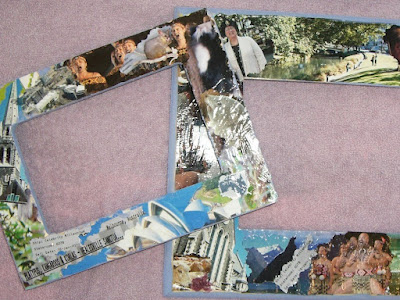
 Have you heard about the The Sisterhood of the Traveling Shawl Project?
Have you heard about the The Sisterhood of the Traveling Shawl Project?The Traveling Shawl is a pink lace shawl that will be knit by compassionate knitters in each of the United States, and travels from person to person in increments of three days per person until it has been completely knitted. It will then be raffled off in late 2009. All profits will go to the Susan Komen Foundation. This site states:
And from the internet Ravelry Knitting Group:... The shawl will visit all fifty states of the US, with one knitter from each state adding 6-8 rows of intricate stitching. Upon completion of the shawl it will be won by someone who has donated to the Passionately Pink for the Cure campaign.
If you would like to be entered in this drawing, make a donation to our Traveling Shawl Team (ID # 3408007). Then forward your confirmation email to travelingshawl@gmail.com For each $5 donation you will be entered into a raffle to win the Traveling Shawl. If you'd like to join our Ravelry group, please visit us at http://www.ravelry.com/groups/traveling-shawl. You can also join our group on Facebook. Simply search Traveling Shawl.
This is about 50 Ravelry knitters from 50 different states...to document the journey of a traveling shawl. It’s journey will begin in Arkansas and once it has been passed to a knitter in every state of our GREAT country, it will return. We hope to accomplish this by October 2009.To follow the progress of the shawl, log in to The Traveling Shawl Blog. Today it is in Oklahoma.
For each $5 donation made to the Susan G Komen Foundation via our Donation Page you can be entered in our drawing to win a chance of owning the completed beautiful lace Traveling Shawl.
Everyone has been impacted in some way by breast cancer. Each entry will highlight the knitter, their state, and the person in whose honor or memory that they are knitting for. Enjoy the journey with us. Check out our blog. The journey has begun - share the news! Don’t forget to get your mammogram.
Be generous and donate. Who knows, you might just win the shawl and be able to give it to someone who is in The Fight!


 Please note the restrictions:
Please note the restrictions: I am going to make this doll about 7-8" in height for an indoor potted plant, whimsically dangling from one of the leaves.
I am going to make this doll about 7-8" in height for an indoor potted plant, whimsically dangling from one of the leaves.










 One more trick that I learned from this book is quoted from page 4 of the book:
One more trick that I learned from this book is quoted from page 4 of the book:
 Ms. Isle states in her blog the term "gewgaw" ...
Ms. Isle states in her blog the term "gewgaw" ...










 One of the bowls I made is just perfect to be given to my friend undergoing chemotherapy for breast cancer. I filled it with candies and attached a little cross tied on to it with a pink ribbon, and filled it with peppermint candies. Here is the card I copied, with a verse from Walt Whitman, that she may enjoy pondering:
One of the bowls I made is just perfect to be given to my friend undergoing chemotherapy for breast cancer. I filled it with candies and attached a little cross tied on to it with a pink ribbon, and filled it with peppermint candies. Here is the card I copied, with a verse from Walt Whitman, that she may enjoy pondering:


 (Picture found at
(Picture found at  This pattern can be found at
This pattern can be found at  This gal is much cuter than the broad sporting the red sweater, and the model's sweater does not have the mistakes in it that can be seen on the red sweater!
This gal is much cuter than the broad sporting the red sweater, and the model's sweater does not have the mistakes in it that can be seen on the red sweater! 

 When I got home, I looked up properties of this type blended wool and found a website
When I got home, I looked up properties of this type blended wool and found a website 
 This artisan center (map shown above) houses several dozens of working artisan shops. Their website says:
This artisan center (map shown above) houses several dozens of working artisan shops. Their website says:



